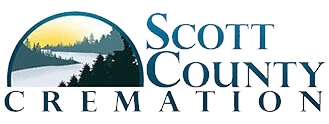WELCOME TO
Scott County Cremation
Serving Shakopee, MN & Surrounding Areas
The loss of a loved one can leave you with a lot of unanswered questions, feelings of stress, and anxiety and grief that makes events difficult to handle. We will guide you through the aspects of the funeral service with compassion, dignity, and respect.
Serving families in
Belle Plaine,
Burnsville,
Carver,
Chanhassen,
Chaska,
Elko New Market,
New Prague,
Savage,
Shakopee, and the surrounding areas.
Our Promise to You
Scott County Cremation is committed to satisfactory service before, during and after the cremation. We guarantee that if you are not 100% satisfied with any aspect of our service, we will make every effort to correct the situation. If we cannot correct it to your satisfaction, you will not be charged for that particular service item.
No Hidden Fee Guarantee
Funeral and Cremation costs can be very confusing. Oftentimes other funeral & cremation providers will quote what seems like a low price, but actually they do not give you the complete costs and there will be hidden add on charges after you have chosen to utilize their services. We have made it easier to understand by creating our “No Hidden Fee Guarantee” package plans.
These plans include:
- Service Fees
- Merchandise
- Cremation Fees
We guarantee that the price we give you over the phone or you see on
this site, will be the price that you will pay.
Cash Advance Items Are Not Included
What some funeral homes fail to disclose are the additional fees that may be necessary. These include Certified Copies of Death Certificates and Medical Examiner Cremation Authorization Fees. We will be more than happy to email you a quote so that you will have an estimate that is as accurate as possible.
Scott County Cremation



